Family: Arctiidae
Subfamily: Arctiinae
Tribe: Arctiini
Hodges # 8249
Home Photo & Other Details Characteristics and Range Map
Scroll down for all photos of ADULTS
for other photos and information click on
IMMATURES ADULTS
___________________________________________________________________________________________________________________________________
___________________________________________________________________________________________________________________________________
#1 just after emerging - wings still up
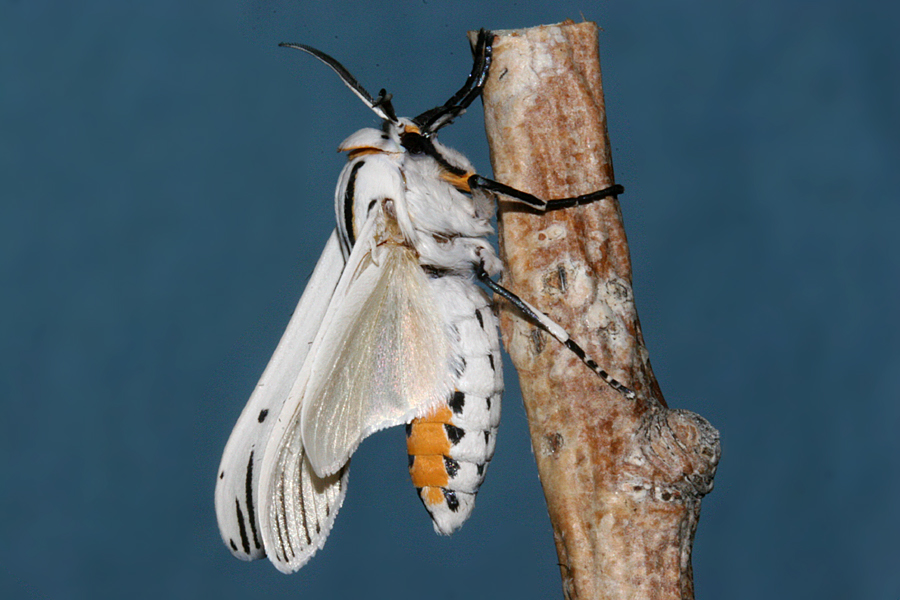
#1 After flipping wings down
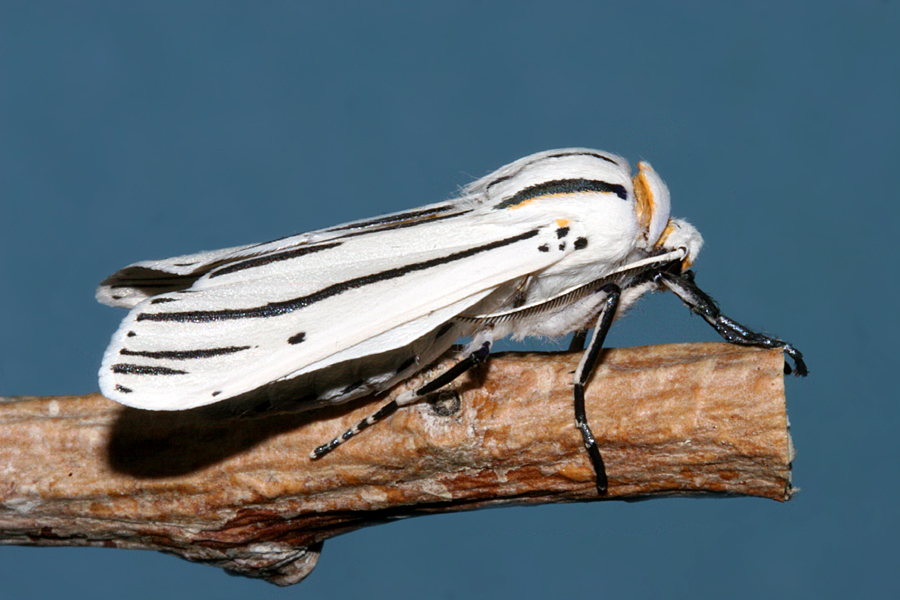
#1 After flipping wings down
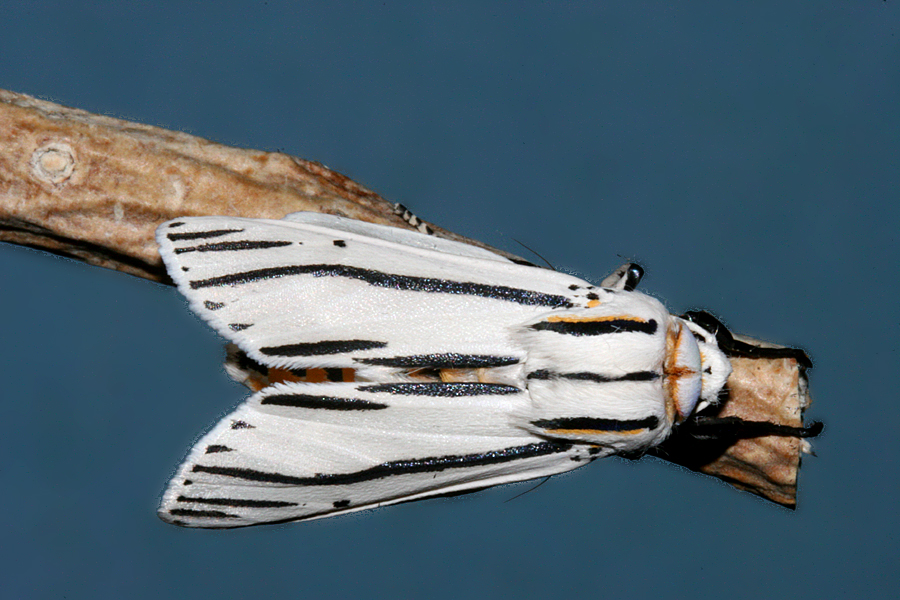
#1 Antenna
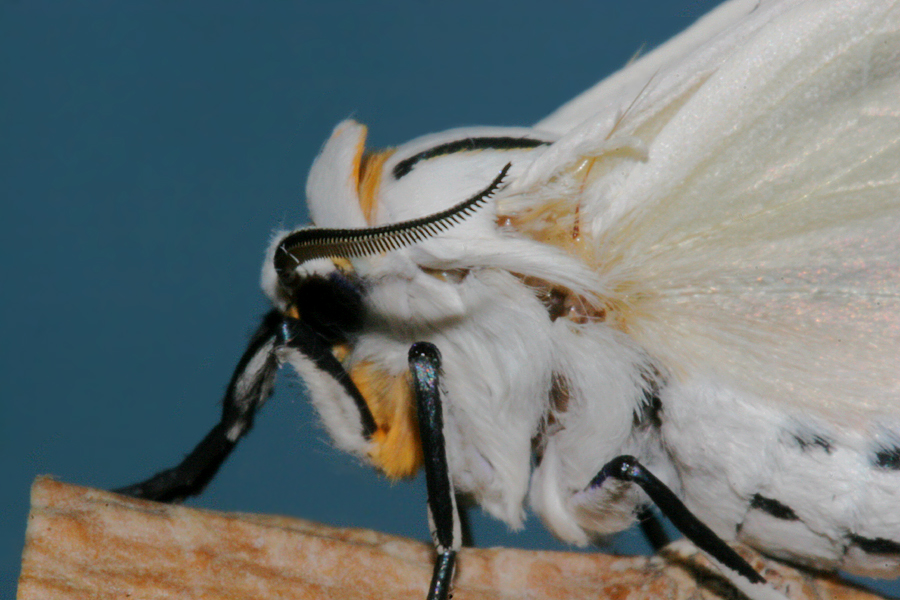
#1 legs
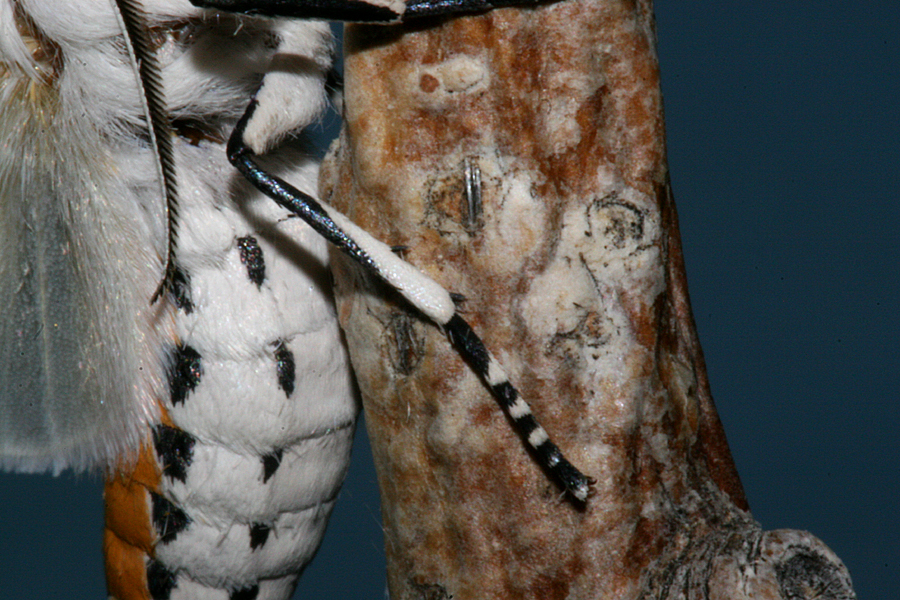
#1 Abdomen
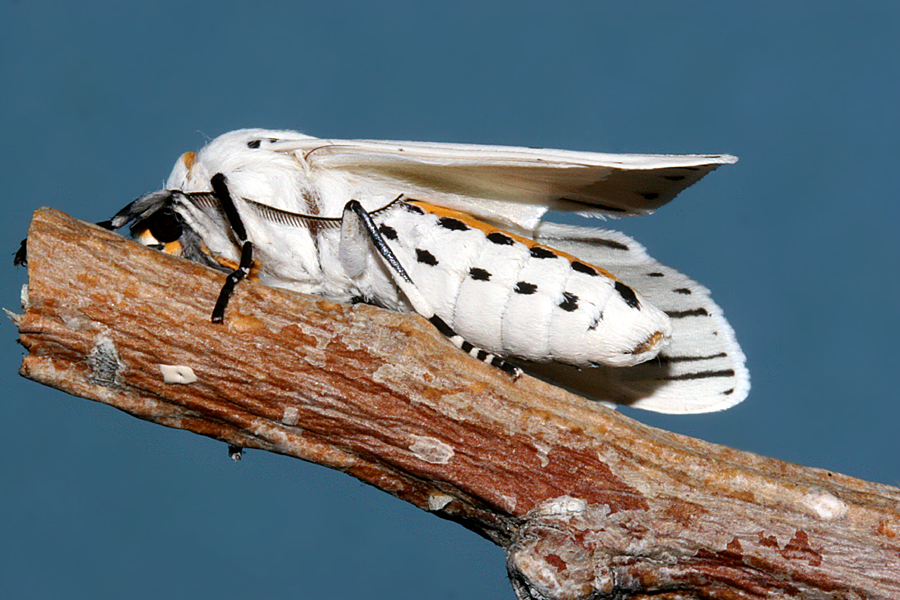
#2 dorsal view - Posed
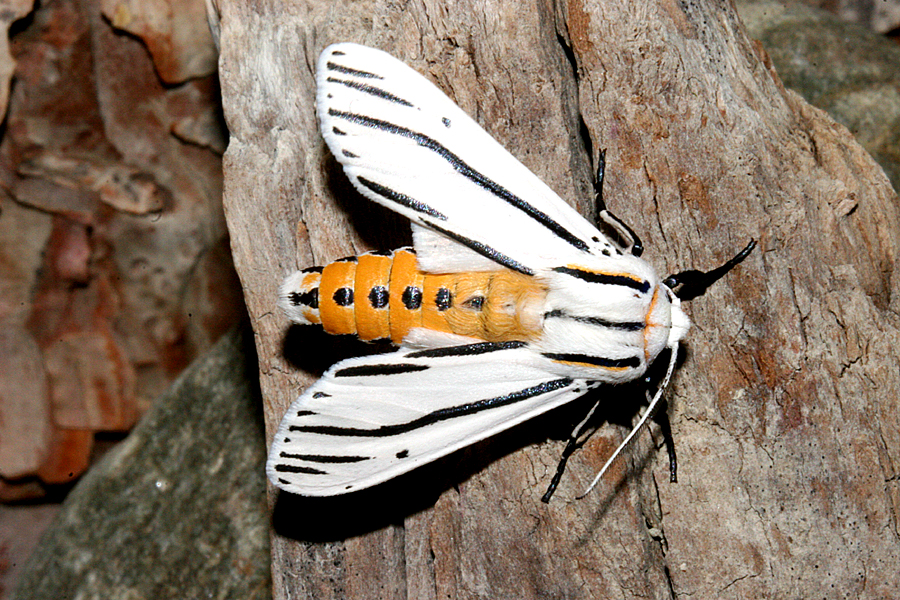
| PHOTO DETAILS - ©Nicky Davis John Richards located a female in a light trap 20 May 2011, Catalina State Park, Pima County, Arizona. She had a wingspan of 45 mm. Forewings and hindwings were all white. The only black markings noted were along the main veing of the forewing. The abdomen had the typical yellow markings of an Arctiid with the black spots along the Sides. She was placed in a paper sack and after a few days started to deposit ova in small clusters. They were about 1 mm and a yellowish pearl color. She oviposited 120 ova. John looked through several books and computer resources. The only white Arctiid with a black vein that he could find was the Edtypis clio. However, the pictures showed much more distinctive markings and more of them than he could remember but the female had been in a bag and may have lost some of her markings. Ectypia clio feed on Asclepias sp. (milkweed) and Dogbane. 1 June 2011, John photographed some ova which were a light grayish-tan color with a mottled maroon spotty coloration. Some others had turned black. 2 June 2011, Some hatched from the black ova. They appear black in color. When magnified they are a pale yellowish-gray body with moderate black hairs. Body length is 2mm. He offered dogbane, marigold and dandelion. 3 June 2011, More hatched about 15 in total. They are refusing to eat Dogbane, clover, spurge, dandelion and marigold. 6 June 2011, They started eating the offered Milkweed , Asclepias speciosa. 7 June 2011, First instars are 4 mm long, double the size the day they first hatched. The body is a medium yellow/brown. A lighter band is down the middle of the back without a distinct edge. The head is blackish and round and the thoracic shield is the same color. Each segment from the 4th to the 10th has 5 black bumps: two dorsally and two ventrally and then one more a little more toward the ventral side. This is repeated on the other side. The dorsal ones have two long hairs that are dark but hard to tell the color. The third one has only one hair and the other two appear to have none. 9 June 2011, Half of them shed their first instar skin. They seem darker and with longer hairs. They are now 4 mm long John gave some larvae to me to finish rearing while photographing them. 12 June 2011, #1 molted to third instar. 14 June 2011, Three molted to third instar. 17 June 2011, #1 molted to fourth instar 22 June 2011, #1 molted to fifth instar 25 June 2011, #1 is now 22 mm long. 28 June 2011, #1 is now 23 mm long. 5 July 2011, #1 was 40 mm and walked off the plant again 14 July 2011 #1 formed a pupa 26 July 2011 #1 adult moth emerged LIFE HISTORY: Ovum: Under 10 days Larva: These larva would eat for a while, then seemed to go into a diapause - over 34 days Pupa: 12 or more days Adult: unknown Broods: unknown Hibernation: unknown HOST PLANT: Showy Milkweed Asclepias speciosa Back to Top |